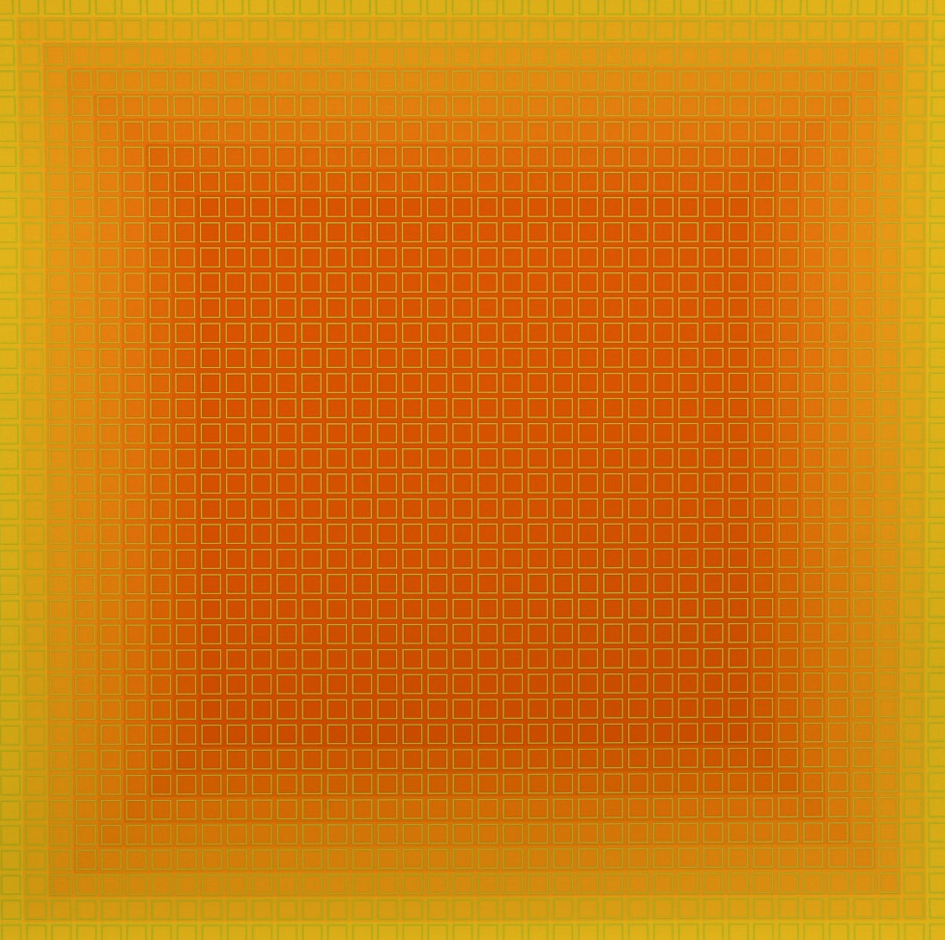

Title: Op Art Movement Silkscreen On Paper By Artist Julian Stanczak
Shipping: $100.00
Artist: N/A
Period: Unassigned
History: N/A
Origin: N/A
Condition: Excellent
Item Date: N/A
Item ID: 6611
By Artist Julian Stanczak American / Polish, b. 1928 Continual", 1979. Silkscreen on paper, signed in pencil lower right, marked H/C in pencil lower left, titled inscribed verso, unframed. Stanczak received his Bachelor of Fine Arts degree from the Cleveland Institute of Art, Cleveland Ohio in 1954, and then trained under Josef Albers and Conrad Marca-Relli at the Yale University, School of Art and Architecture, New Haven, where he received his Master of Fine Arts in 1956. The Op Art movement was named after his first major show, Julian Stanczak: Optical Paintings, held at the Martha Jackson Gallery in New York in 1964. His work was included in the Museum of Modern Art's 1965 exhibition The Responsive Eye. In 1966 he was named a "New Talent" by Art in America magazine. In the early 1960s he began to make the surface plane of the painting vibrate through his use of wavy lines and contrasting colors in works such as Provocative Current (1965). These paintings gave way to more complex compositions constructed with geometric rigidity yet softened with varying degrees of color transparency such as Netted Green (1972). In addition to being an artist, Stanczak was also a teacher, having worked at the Art Academy of Cincinnati from 1957–64 and as Professor of Painting, at the Cleveland Institute of Art, 1964-1995. He was named "Outstanding American Educator" by the Educators of America in 1970. Stanczak uses repeating forms to create compositions that are manifestations of his visual experiences. Stanczak's work is an art of experience, and is based upon structures of color. In the 1980s and 1990s Stanczak retained his geometric structure and created compositions with bright or muted colors, often creating pieces in a series such as Soft Continuum (1981; Johnson and Johnson Co. CT, see McClelland pl. 50). More recently, Stanczak has been creating large-scale series, consisting of square panels on which he examines variations of hue and chroma in illusionistic color modulations, an example of which is Windows to the Past (2000; 50 panels). EARLY YEARS & COLLEGE WORK Searching for his own art, Julian sought out Josef Albers at Yale for insight into color behavior. Stanczak build a personal visual vocabulary based on an emotional response to nature, distilled into rhythmic divisions filled with color and texture. *Our job is to find and target great art by collecting a vast array of contemporary, vintage, antique and collectible items from across the globe. Individually handcrafted, we breathe new life into these forgotten relics by giving back each piece it's unique story. We welcome dealers, galleries, and private collectors to register securely and buy with us.
Link: https://en.wikipedia.org/wiki/Julian_Stanczak
Julian Stanczak (born in Borownica, Poland on November 5, 1928) is an American painter and printmaker. The artist lives and works in Seven Hills, Ohio with his wife, Barbara Stanczak, an accomplished sculptor.
Julian Stanczak was born in eastern Poland in 1928. At the beginning of World War II, Stanczak was forced into a Siberian labor camp, where he permanently lost the use of his right arm. He had been right-handed. In 1942, aged thirteen, Stanczak escaped from Siberia to join the Polish army-in-exile in Persia. After deserting from the army, he spent his teenage years in a hut in a Polish refugee camp in Uganda. In Africa Stanczak learned to write and paint left-handed. He then spend some years in London, before moving to the United States in 1950. He settled in Cleveland, Ohio.
In 2007, Stanczak was interviewed by Brian Sherwin for Myartspace. During the interview Stanczak recalled his experiences with war and the loss of his right arm and how both influenced his art. Stanczak explained, "The transition from using my left hand as my right, main hand, was very difficult. My youthful experiences with the atrocities of the Second World War are with me,- but I wanted to forget them and live a "normal" life and adapt into society more fully. In the search for Art, you have to separate what is emotional and what is logical. I did not want to be bombarded daily by the past,- I looked for anonymity of actions through non-referential, abstract art.